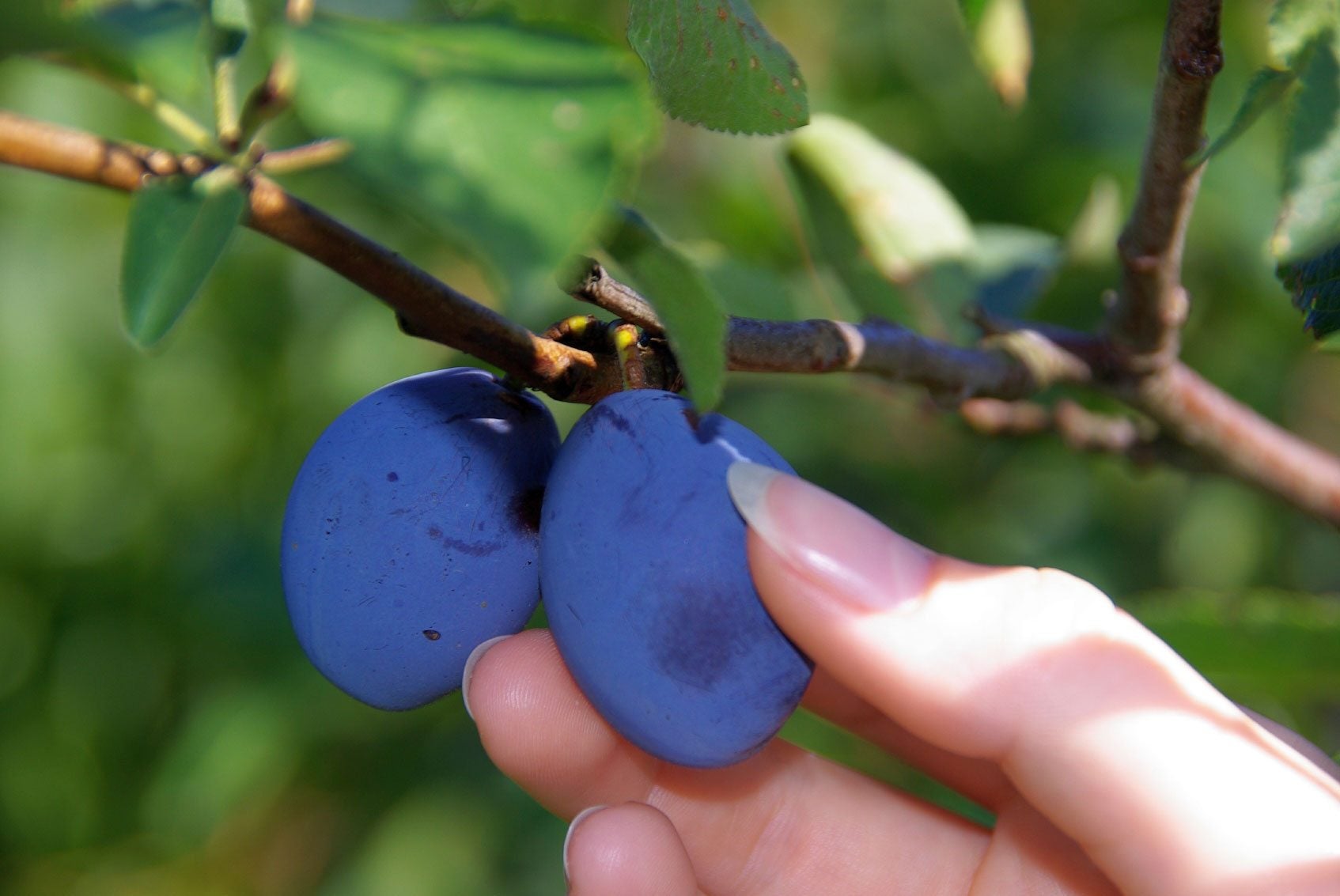Picking Plum Fruit: Tips For Harvesting Plums

If you are lucky enough to have a plum tree in the home garden, I'm sure you don't want to let those delicious fruits go to waste. You may have questions then regarding harvesting plums -- specifically, how to pick plums and when do you harvest plums.
When is the Correct Time for Picking Plum Fruit?
Plum trees are a fertile fruit that can yield from two to three bushels per year, so it is important to know when to harvest plum trees. The hands-down surest way to ensure the time is right for picking plum fruit is by its firmness and flavor. The plums will be becoming soft to the touch and the taste will be sweet and juicy. Hopefully, you have actually eaten a ripe plum at some point in your life and can use this memory as a barometer. The color of the ripening plums can also be an indicator of plums at their peak. As plums approach maturity, the fruit develops its characteristic color. However, there are many cultivars of plum, so you need to be aware of the variety in your garden and how it should look prior to harvesting. For instance, plums varietals such as ‘Stanley', ‘Damson', and ‘Mount Royal' change from green to greenish-blue then segue to dark blue or purple when they are ripe. Other plum cultivars are ripe when the skin color changes from yellow to red. Also, as the fruit ripens, the plum develops an almost powdered color in some varieties.
How to Pick Plums
Some types of plum, such as the Japanese varieties, are harvested a few days before they are completely ripe and then allowed to ripen in a cool, dry area. The fruit will no doubt have skin that looks ripe, but the fruit will still be somewhat firm. European plums are ready for harvest just as the fruit begins to soften and the skin color changes to a background hue of yellow. Early maturing varieties of plum will need to be harvested over a period of weeks, as the fruit is not ripe on the tree at the same time. Later varietals usually ripen at the same time and can, therefore, be harvested all at once. If you are interested in making prunes, however, the plums are allowed to ripen completely upon the tree until they naturally fall. Gather them up and allow them to dry naturally; spread apart in the sun (but keep in mind you may be sharing the plums with other critters!) or in a dehydrator or oven set at 175 F. (79 C.) for about 10 hours or so. To hasten ripening indoors, keep the plums at temps between 60-80 F., (15-26 C.). High or low temps will likely cause internal damage -- mealiness, browning, or an off-taste. This is only if you want to ripen fruit in a hurry. For long-term storage, the fruit should be kept at temps between 31-32 F. (0 C.) and will keep for about two weeks. To pick your ripened plums simply lightly grasp the fruit and gently twist it from the stem. Once you have your plum bounty, it's just a matter of deciding which delicious recipe you will use them in -- or if they even make it that far since there's almost nothing as delicious as a ripe, juicy plum.
Gardening tips, videos, info and more delivered right to your inbox!
Sign up for the Gardening Know How newsletter today and receive a free copy of our e-book "How to Grow Delicious Tomatoes".

Amy Grant has been gardening for 30 years and writing for 15. A professional chef and caterer, Amy's area of expertise is culinary gardening.
-
 Looking For Plants To Give You The Soft And Fuzzies? Try These 5 Fuzzy Leaf Plant Options
Looking For Plants To Give You The Soft And Fuzzies? Try These 5 Fuzzy Leaf Plant OptionsLovers of texture, drama, silver foliage and tactile plants will adore these special sensory garden additions. These fuzzy leaf plant options will leave you all aglow
By Susan Albert
-
 Get Ready For A Summer Of Hummers! Grow These Full Sun Hummingbird Plants and Flowers
Get Ready For A Summer Of Hummers! Grow These Full Sun Hummingbird Plants and FlowersIf you’re lucky enough to enjoy a sunny backyard, make sure you are maxing out on your pollinator opportunities and grow these full sun hummingbird plants and flowers
By Tonya Barnett